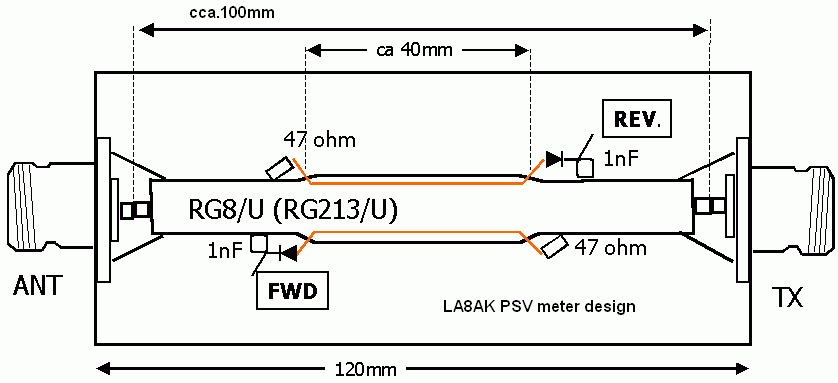Skonštruovať VKV PSV meter nemusí byť náročné, ak nepožadujeme špičkové parametre a presnosť. Mnohokrát takýto merací prístroj príde vhod len ako kontrola – napríklad či nie porucha v koncovom stupni či na anténe.
Veľmi jednoduché konštrukciu publikoval kedysi Jan-Martin Noeding LA8AK (SK). Podstatou je, že smerové odbočnice z drôtov sa vsunú pod opletenie koaxiálneho kábla. To dáva predpoklad, že impedancia vedenia sa príliš nezmení a PSV meter by mal merať správne.
Konštrukčný postup PSV metra LA8AK
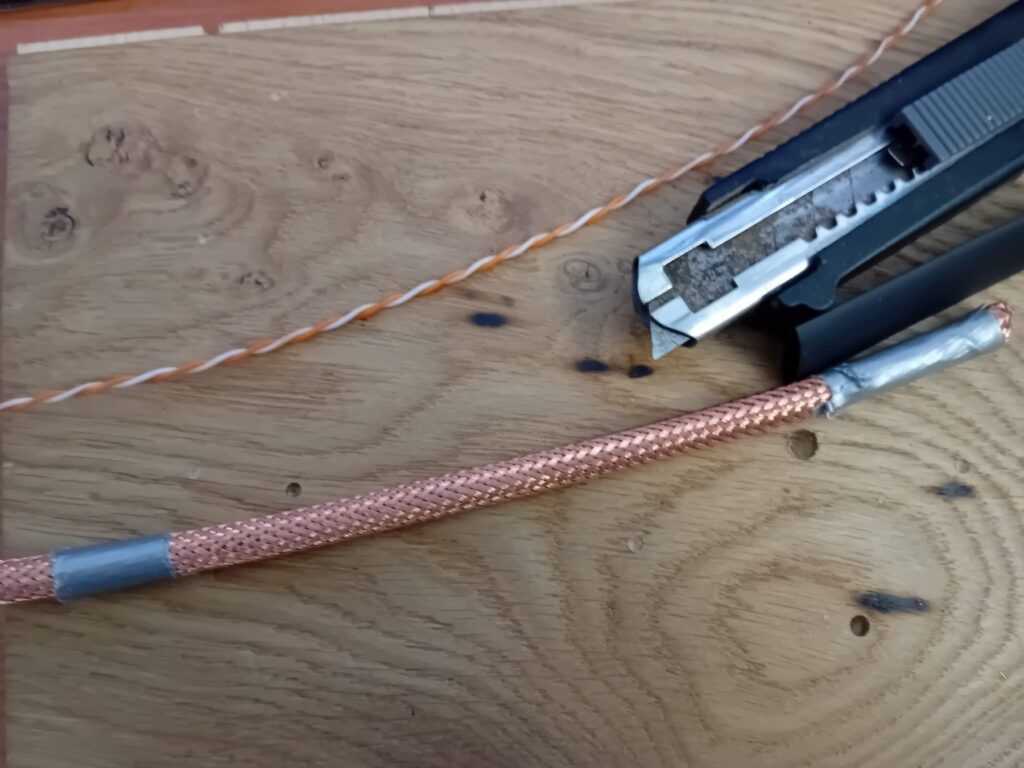
- zoberieme asi 20cm hrubšieho koaxiálneho kábla, napr. RG-213, a vrchnú izoláciu nožom odstránime
- budeme potrebovať aspoň 50mm dlhú tenkú trubičku, napr.z pera. Vnútorný priemer musí byť dostatočný, aby sme ním mohli pretlačiť drôtik odbočnice
- malým skrutkovačom jemne urobte oko v na vrchnej strane opletenia koaxiálneho kábla. Vhodné miesto je tam, kde sa križujú hlavné pramene
- zasuňte trubičku do očka na kábli
-
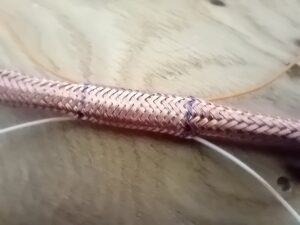
Vsunutý drôtik pod opletenie koaxiálneho kábla asi 40mm od tohto miesta urobte druhé oko na vrchnej strane opletenia koaxiálneho kábla a prestrčte ním trubičku von
- trubičkou prevlečte drôtik odbočnice a trubičku vytiahnite z ôk
- presne na spodnej strane opletenia koaxiálneho kábla rovnakým spôsobom spravte druhú odbočnicu
- vezmite teplomzmšťujúcu sa bužírku v dĺžke cca. 40mm a nasuňte ju na koaxiálny kábel v mieste odbočníc
- odbočnice aj opletenie koaxiálnehjo kábla napnite a bužírku zohrejte
-
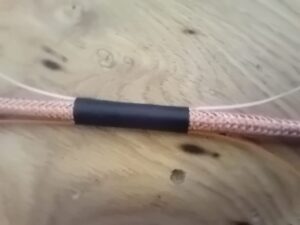
Odbočnice fixované bužírkou ak ste postupovali správne, odbočnice sú zafixované v správnych pozíciách
- koaxiálny kábel symetricky skráťte na požadovanú dĺžku a na časti opletu koaxiálneho kábla od detekčného obvodu po konektory dajte taktiež teplomzmršťujúcu sa bužírku
- čo najkratšími vývodmi pripojte zaťažovacie rezistory a detekčné obvody a kábel zakončite konektormi
Mne sa podarilo vyrobiť takéto meracie vedenie na prvý pokus približne za hodinu. Ako skrinku som použil starý CB PSV meter z ktorého som využil aj prepínač, potenciometer a merací prístroj. Celé zhotovenie tak zabralo cca. 1,5 hodiny a minimálne náklady.
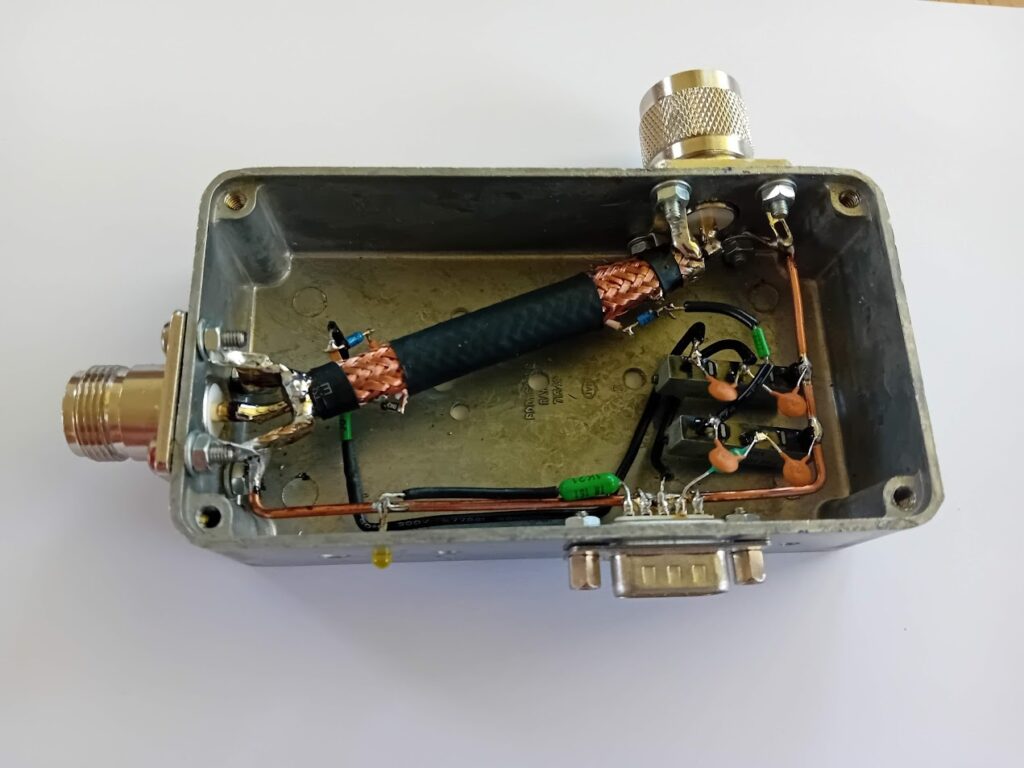
Presnosť merania v porovnaní s komerčným prístrojom MFJ je veľmi dobrá a namerané hodnoty sú prakticky zhodné. V mojom prevedení je minimálny detekovaný výkon cca. 1W na 144MHz.
